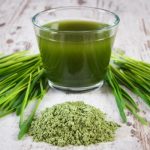
Get to the root cause: How to recognize and treat common nutrient deficiencies
Tuesday, November 12, 2024 by Lance D Johnson
http://www.naturalnewsnutrients.com/2024-11-12-how-to-recognize-treat-common-nutrient-deficiencies.html

Many of today’s chronic diseases can be traced back to nutrient deficiencies and the inability to properly absorb vitamins and minerals. An individual’s health problems often begin slowly, with subtle signs and symptoms. Low energy, joint pain, bloating, acne and improper immune function are just a few examples of the body expressing deeper issues regarding nutrient absorption, and improper hormone regulation.
When small signs and symptoms come up, many people do not understand what their body is actually telling them. The allopathic model of healthcare is quick to slap a disease label on the patient and prescribe drugs. However, proper recognition of nutrient deficiencies can save time, energy, and money and can get to the root of the problem. Responding with the correct foods and herbs can address the underlying nutrient deficiencies, prevent more serious health problems from developing, and often even reverse disease.
What’s behind common nutrient deficiencies?
Nutrient deficiencies are the result of a poor diet, consisting primarily of processed foods, sugary beverages, seed oils, and refined grains. Vitamin and mineral deficiencies are more common today because the soil has been aggressively over-farmed without any crop rotation, cover crop usage, or rotational grazing practices. The soil is often over-tilled and eroded, over-exploited by fertilizers, and polluted by pesticides and herbicides. Today’s soil and the foods that are mass produced within it, often lack an adequate and diverse array of trace minerals. These trace minerals, such as selenium, chromium, and magnesium, are needed to help the body assimilate vitamins at the cellular level.
The other problem exacerbating nutrient deficiencies is poor gut health. Americans have been over-prescribed antibiotics, antacids, and proton pump inhibitor drugs. PPIs have been shown to deplete magnesium levels, for example. Antibiotics generally deplete the commensal bacteria in the gut, crippling nutrient absorption. Heavy metals can also compete with nutrients for absorption, so water quality is equally important.
While many people reach for a multivitamin, many of these vitamin supplements are derived from chemicals, fungus, rocks, and isolates that are not properly utilized by the cells. For example, synthetic citric acid is often labeled as Vitamin C. The chemical version (citric acid) is manufactured through the fermentation of Aspergillus niger, a mold. It’s important to remember, when purchasing supplements, one must search the nutrition label for vitamins that are sourced from whole foods and herbs.
Common nutrient deficiencies, their signs, and dietary solutions
According to the Micronutrient Information Center at Oregon State University, Americans are struggling to get enough vitamins in their bodies. The percentage of Americans below the average dietary requirements for vitamin D, for example, is 96%! This deficiency often manifests as bone weakness and low immune function. Vitamin D can be found in foods like egg yolks and mushrooms, but it is primarily synthesized from sunlight.
At least 51% of Americans are deficient in vitamin A. Signs related to this deficiency include vision loss and potentially blindness. Vitamin A deficiency can also manifest as skin issues, slow wound healing, and even infertility. Vitamin A is found in green leafy vegetables, along with orange- and yellow-colored vegetables. Vitamin A is also high in chili powder, dill, and stinging nettle leaf.
Approximately half of all Americans aren’t getting enough calcium. This is often indicated by bone weakness and cramping. Calcium is naturally found in dairy products and dark green leafy vegetables. Marjoram and oregano are also excellent sources.
At least 43% of Americans are deficient in Vitamin C. This can make one more prone to infection and also lead to fatigue and scurvy. Vitamin C is readily obtained from citrus fruits, broccoli, sweet potatoes, and tomatoes. It’s also highly concentrated in acerola cherries, camu camu, and amalaki berries.
Vitamin B6 deficiency is found in 15% of the population. Signs include numbness, brain fog, and confusion. Some of the best sources of B6 include fish, organ meats, potatoes, and non-citrus fruits. Chlorella, a seaweed supplement, contains bio-available B6, and has an impressive nutrition profile all around.
Iron deficiency is common in 8% of the population. Signs like fatigue and lethargy indicate iron deficiency. To restore the body’s iron levels, it’s best to eat red meat, poultry, beans, or thyme.
Vitamin B12 deficiency affects 4% of the population. Fatigue and shortness of breath are common signs of deficiency. Meat, fish, poultry, eggs, and dairy are all great food sources to restore B12.
Other deficiencies of concern include low magnesium. Low intake of magnesium is associated with increased risks of several chronic diseases, including cardiovascular disease, Type 2 diabetes, and osteoporosis. Magnesium is readily obtained from green leafy vegetables, whole grains, beans, and nuts.
Addressing the chronic disease epidemic begins with individuals understanding common signs of nutrient deficiencies and learning how to properly respond with the correct foods, herbs, and whole food supplements. Mitigating exposure to antibiotics, antacid drugs, heavy metals, and synthetic vitamins will assist the body in absorbing the nutrients from food.
Sources include:
Tagged Under: Tags: calcium, digestion, food cures, food is medicine, fruits, goodfood, goodhealth, goodmedicine, Herbs, iron, Magnesium, microbiome, natural cures, natural health, natural medicine, nutrient absorption, nutrient deficiency, nutrients, nutrition, organics, superfoods, supplements, veggie, vitamin A, vitamin B12, vitamin B6, vitamin C, vitamin D
RECENT ARTICLES


Take back your OWN health: Learn to recognize the basic signs of nutrient deficiencies

Nature’s multivitamin: Barley grass helps protect the body from numerous diseases
By Olivia Cook

There’s a vitamin that helps the body utilize nutrients, maximizing cellular repair and energy production

Sermon 22: Mike Adams explains how to DETOX using God’s molecules
By Kevin Hughes
COPYRIGHT © 2017 NATURAL NEWS NUTRIENTS


